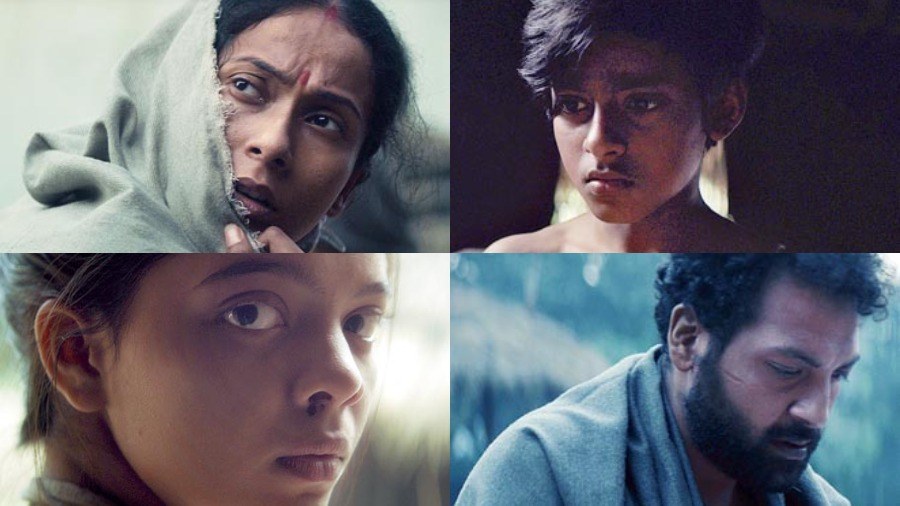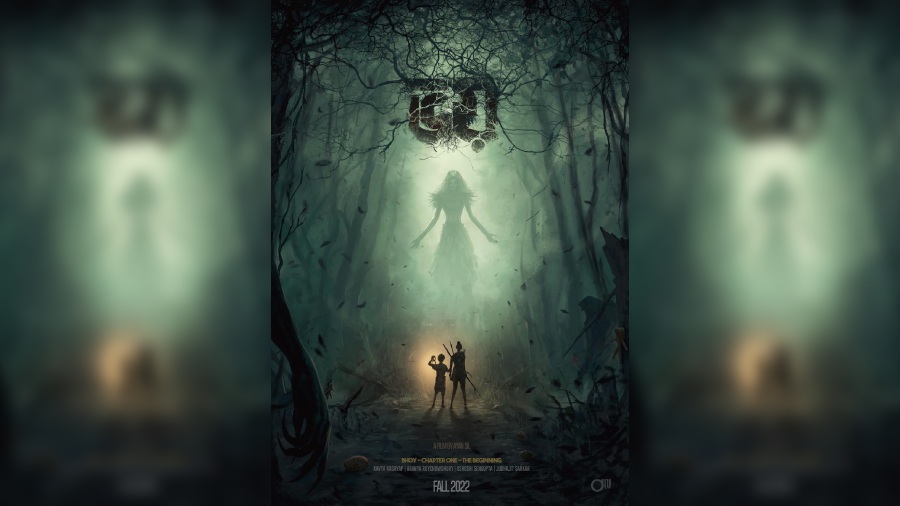Cinematographer Ayan Sil is fascinated by the folklore of Bengal. “Ever since childhood I have loved reading Bengali storybooks on monsters and creatures lurking in the ponds, bamboo groves and trees,” he says. Bhoy, Ayan’s first film as a director, celebrates the rich and exciting world of Bengali folklore. A Telegraph chat with Ayan...

Ayan Sil
What is the genesis of your film Bhoy?
The memories of my Boroma (great grandmother) telling me stories about monsters and brave champions fighting them off, while the evening sets in the village, during my summer holidays, are something I cherish forever. And I have always wanted to explore this space as a film-maker. And during the first lockdown of 2020, Roshni, one of the co-creators, and I had spent almost three months in this same village away from the city. We would take a stroll in the woods, sit next to the river, walk through the grassy paths and just talk about bringing this world into cinema and share it with the rest of the world. That is when and where we started working on the story of Bhoy. I made a basic story and handed it over to Roshni, who structured it out. Then I sent it over to my friend Simoquin, who is a comic book artist and writer, he wrote the screenplay and gave Bhoy the final shape storywise.
Why did you decide to direct this film?
I wanted the world to see the stories, the pictures, the sounds I saw and heard in my head when I listened to these stories as a child. And the only way I could do that was to make the film myself. I have been working as a cinematographer in the industry for a while now, and in time I have realised in order to make a good film every department needs to come together. And that can happen when a director steps in and looks after every detail of the film, and does what his role is, to direct.
Bhoy is a very unique film considering the genre, the look, the story, the performances, the artistry and especially the technicality. So, I wanted to be involved in each of the departments and help them craft this film for me and the role you give to a person who does this is the director I guess!
What were the challenges of directing your film?
The film revolves around two children and their performances, so working with them and getting them ready for their roles I feel was our biggest challenge. And even Ushoshi (Sengupta), who plays the mother, was portraying something that was completely new to her, a village mother. And since I am more from a technical background, I wanted to have an acting coach to run the workshops that would prepare them for their roles, which is where Soumyadeep Bhattacharya or Bubbla came in and did a tremendous job. Throughout this process of doing workshops and spending time together fighting and doing stupid things, the two kids gelled so well with each other and their characters their entire chemistry on the screen just shows.
Apart from these the film required very meticulous production design and costumes. We had to build huts, villages, funeral pyres, altars, period-based clothing, fantasy character clothing, fabrics, the list is endless.

Clockwish from top left: Ushoshi, Aranya, Judhajit, and Kavya
Tell us about the storyline?
The storyline is set in a dying village ravaged by plague where these two children, Apu and Durga, are left to fend for themselves as their father takes the mother away to a distant land to find a cure for her. In order to survive they must venture into the forbidden forest and face the dangers their mother told them stories about. This story is divided into three parts. This is just the first installment of the Bhoy Trilogy.
Tell us about the characters in your film?
There are four characters in the first part of the trilogy, a mother, a father and their children, who I have named Apu and Durga as a homage to Pather Panchali, which has been an inspiration for me ever since I was a child. The mother and father are played by Ushoshi Sengupta and Judhajit Sarkar, while the brother and sister are played by Aranya Roychowdhury and Kavya Kashyap respectively. There are other creatures and entities which have been played by Roshni Ali, Rhea Rao, Hafiza Khatun and Arka Mukherjee.
How’s the look of your film?
The look of our film has its roots in the climactic and general living conditions of the world we have tried to create. A place without hope, a place reeking of death and despair, a place rotten in time, a place that reflects nature’s cleansing process. The look characterises a dimly lit world that’s both claustrophobic and endless at the same time, spewing out fear of the unknown in every turn. Muddy highlights, dim sources, a foggy world and a monotonous colour scheme drive the core look of the film.
What did you keep in mind while designing the look of your film?
I wanted the world to look very monotonous, so we had a particular colour scheme for the art and the costumes. The entire world of the film has mostly three-four colours. A few of the creatures and entities were taken from the Bengali culture so I had to make sure I was true to the lore but at the same time I could offer the audience a very new and fresh look for which I referred to a lot of old Bengali pulp culture and built my look based on that. The main entities of the film, the Vankanyas, were based out of druidic and shamanic lore from various cultures and folklore.
Their look had to be based on nature elements, which was a big challenge considering it’s very difficult to find good prosthetic artists, so I had to find a different route. The costume team, Roshni and Nibadita along with our make-up artist Abhishikta came up with really cool looks that could be done without the usage of any prosthetics. We had to do several rounds of testing till we finally nailed the look and they just look fantastic on screen.
For the main location of the film, I wanted a hut that is on the edge of the forest, which was naturally very difficult to find. So we found a piece of agricultural land on the edge of a forest, took it on rent from the farmer and made a hut there from the ground up.
